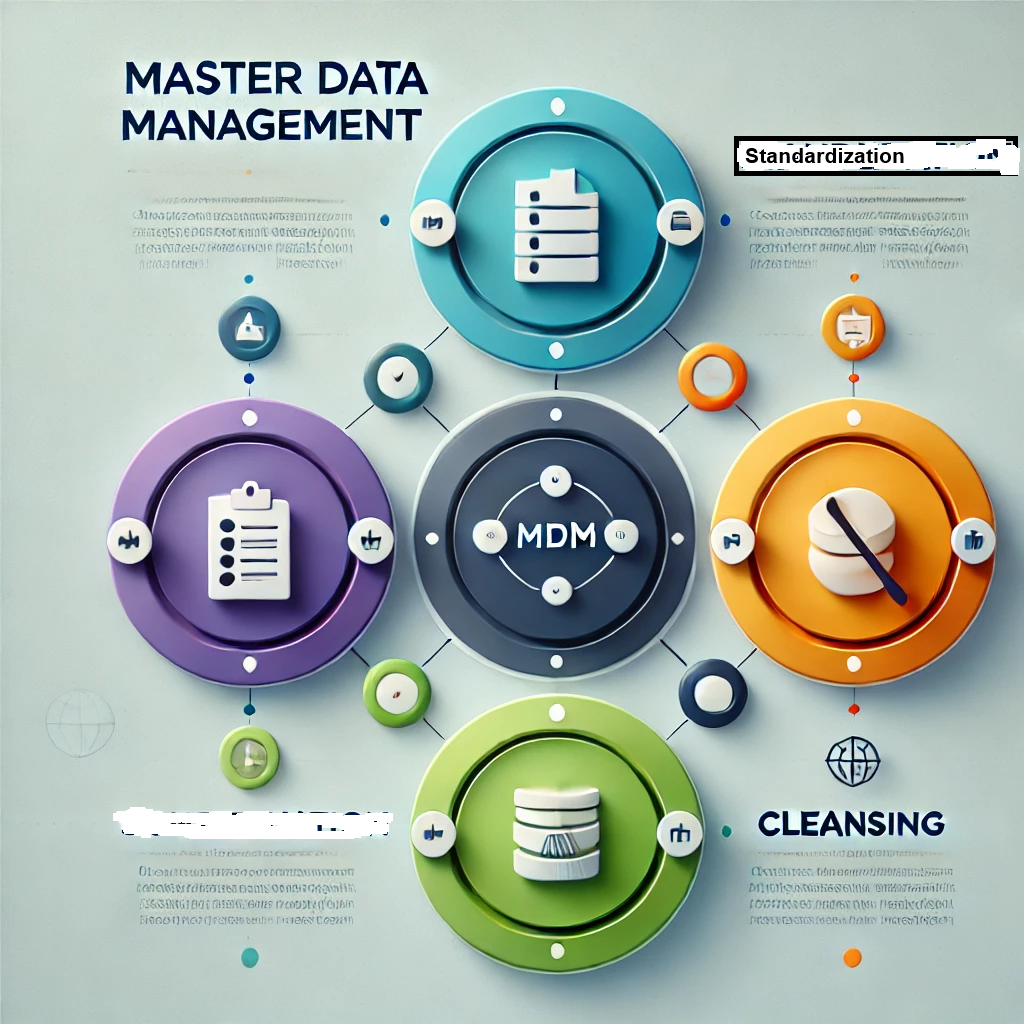Introduction
Master Data Management (MDM) is a crucial component in ERP that ensures the consistency, accuracy, and reliability of an organization’s most essential data. MDM enables companies to manage their key data—such as customer, product, supplier, and employee information—in a centralized and unified way. When executed well, MDM enhances the effectiveness of ERP systems, reducing errors and providing a single source of truth across all business functions.
This article explores the significance of MDM in ERP, the core elements involved, and best practices for implementing successful master data management.
The Importance of Master Data Management in ERP
Master data represents the critical business information shared across departments. Managing this data effectively ensures that departments aren’t using outdated or conflicting information. Here’s why MDM matters in ERP systems:
- Ensures Consistency: MDM centralizes critical data, ensuring departments use consistent information.
- Improves Decision-Making: Unified master data enables accurate analytics, helping businesses make well-informed decisions.
- Streamlines Operations: Consistent data reduces redundancies, improves process efficiency, and minimizes errors in daily operations.
- Supports Compliance: Consistent and accurate master data supports regulatory compliance, especially in industries like healthcare and finance.
Key Components of Master Data Management in ERP
1. Data Governance
Data governance defines the policies, roles, and responsibilities around data management. By setting rules for data ownership, access, and updates, organizations can maintain control over their master data.
2. Data Quality Management
Data quality management in MDM includes processes for validating, cleansing, and enriching master data. This ensures the data remains accurate, complete, and relevant.
3. Centralized Data Repository
A centralized data repository is essential for managing and storing master data in one place. This “single source of truth” enables all departments to access consistent data, improving collaboration and reducing conflicts.
4. Data Lifecycle Management
Master data has a lifecycle—creation, modification, utilization, and retirement. Effective lifecycle management ensures that data remains relevant and is disposed of when no longer necessary.
5. Data Stewardship
Data stewardship assigns responsibility for data accuracy and integrity to specific individuals or teams. These stewards enforce data governance policies and ensure ongoing data quality.
Challenges in Master Data Management
1. Data Duplication
Multiple systems may store similar data, leading to duplicates and inconsistencies. Regular deduplication processes and a centralized repository can help prevent this issue.
2. Data Silos
Isolated data silos occur when different departments manage data separately, causing conflicting or redundant information. MDM strategies must focus on integrating data across departments to eliminate these silos.
3. Poor Data Quality
Inconsistent, incomplete, or outdated data can hinder MDM efforts. Regular data quality audits and cleansing are essential to maintain high data standards.
4. Scalability Issues
As organizations grow, so does their data. Scalable MDM solutions allow businesses to handle increasing data volumes without compromising performance or quality
Best Practices for Effective Master Data Management in ERP
1. Define Clear Data Standards
Establish clear data standards, including naming conventions, formats, and validation rules. Standardized data formats ensure consistency across the ERP system and reduce errors.
2. Assign Data Stewards
Appoint data stewards responsible for maintaining data quality and enforcing governance policies. Having dedicated data stewards increases accountability and helps maintain high standards.
3. Use Data Quality Tools
Leverage data quality tools for automated validation, deduplication, and cleansing. These tools help detect and correct inconsistencies, ensuring high data quality across the board.
4. Implement Data Governance Policies
Data governance policies establish who can access, update, and modify master data. By defining these policies clearly, organizations can prevent unauthorized changes and maintain data integrity.
5. Conduct Regular Data Audits
Regular data audits help identify issues with data quality, consistency, and compliance. Audits also provide insights into areas where data standards may need adjustment.
Benefits of Strong Master Data Management
- Reduced Operational Costs: Fewer errors and improved efficiency mean lower operational costs.
- Enhanced Collaboration: With consistent data, departments can work together more effectively.
- Better Customer Experience: Accurate customer data enables personalized interactions and improved service.
- Improved Analytics: Consistent, high-quality data leads to more reliable insights and forecasts.
Conclusion
Master Data Management is a foundational aspect of ERP that keeps critical data accurate, consistent, and accessible across departments.
With best practices like defining data standards, assigning data stewards, and using data quality tools, organizations can leverage MDM to streamline operations, enhance decision-making, and support growth.
Continue your ERP data management journey by exploring our next article on Data Governance in ERP: Ensuring Compliance and Data Security. And if you missed it, don’t forget to read about Data Integration in ERP for creating a unified data environment.


One thought on “Master Data Management in ERP: The Key to Consistent, Reliable Data Across Systems”